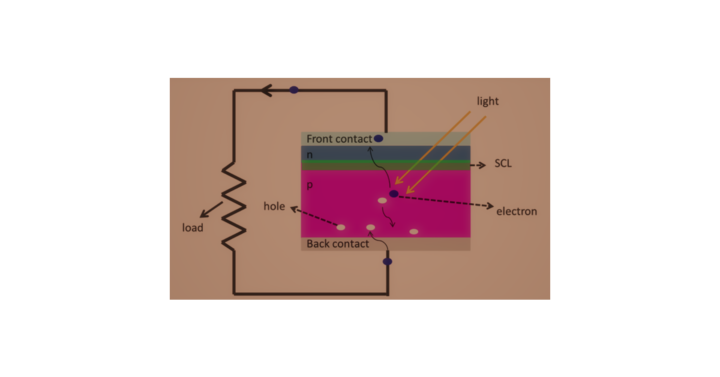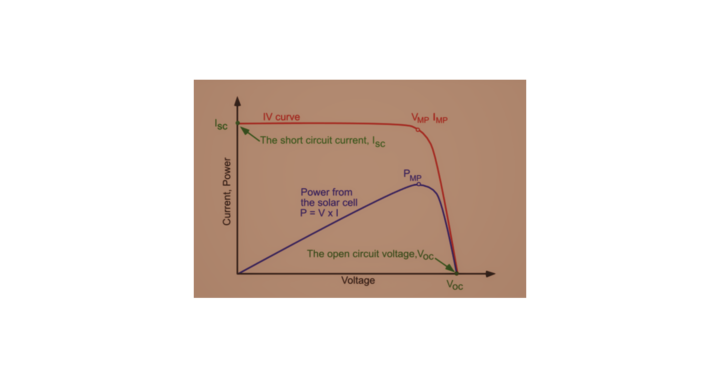- Home/
- GATE ELECTRONICS/
- GATE EC/
- Article
PN Junction Solar Cell
By BYJU'S Exam Prep
Updated on: September 25th, 2023

The most abundant source of energy is Solar energy. The energy from the Sun is received in two forms, light and heat, and to convert light energy into electrical energy, we use solar panels. Solar panels comprise an array of solar cells, and solar cells are made up of PN junctions. Solar cells behave like small batteries when the incident light breaks the thermal equilibrium condition.
In this article, you will learn about the solar cell’s basic construction (materials that were used and the materials that are being used in current technology), its working principle, its VI characteristic curve, and its equivalent circuit.
Table of content
What is a PN Junction Solar Cell?
PN Junction Solar cells are semiconductors that convert light to electrical energy. They are also known as PV(Photovoltaic) cells. Individual solar cells are combined to form modules known as solar panels. The solar panels are arranged in parallel and series according to the power requirement.
The first generation of PN Junction solar cells was produced using monocrystalline or polycrystalline silicon crystals. The recent generation of solar cells consists of concentrated, polymer-based, dye-sensitized, nanocrystal-based, and perovskite-based solar cells.
Formulas for GATE Electronics & Communication Engineering – Control System
Construction of PN Junction Solar Cell
In practice, p-n junctions of silicon solar cells are made this way, but rather by diffusing an n-type dopant into one side of a p-type wafer (or vice versa). A solar cell is made up of silicon which absorbs the photons. Silicon wafers are doped, and the metal contacts are put in to connect each solar cell to another. After this, these cells are given an anti-reflective coating. This coating is used to protect against sunlight losses. Finally, solar cells are encapsulated and placed in an Aluminum frame. The diagram gives the construction details of PN Junction solar cells.

Working Principle of PN Junction Solar Cell
Light reaches the p-n junction in the form of photons and supplies sufficient energy to the intersection to create a number of electron-hole pairs. The thermal equilibrium condition of the meeting is broken by incident light. The free electrons in the depletion region can quickly come to the n-type side of the junction. Similarly, the depletion region’s holes come to the junction’s p-type side. Once the newly created free electrons come to the n-type side, the newly created holes that come to the p-type side can not further cross the junction because of the barrier potential of the intersection.
Electrons concentration becomes higher on the n-type side of the junction, and hole concentration becomes more elevated on the p-type side, so the p-n hub behaves like a small battery cell. Thus voltage is set up, which is photovoltage. When we connect a small load across the junction, current flows through it.
Formulas for GATE Electronics & Communication Engineering – Signals Systems
Equivalent Circuit of PN Junction Solar Cell
The electronic behaviour of a solar cell can be understood by its electrical equivalent and is based on discrete ideal electrical components. A current source may model an exemplary solar cell in parallel with a diode; in practice no solar cell is perfect, so a shunt resistance and a series resistance component are added to the model. The equivalent circuit diagram of solar cells is shown below.
I = IL – ID – ISH
Where
- I = Output current
- IL = Photogenerated current
- ID= Diode current
- ISH = Shunt current
VI Characteristics of PN Junction Solar Cell
The Solar Cell I-V Characteristic Curves show a particular photovoltaic cell’s current and voltage (I-V) characteristics and describe its solar energy conversion ability and efficiency.
With the solar cell open-circuited, the current is zero, and the voltage across the cell is maximum, known as the solar cell-cell’s-circuit voltage or VOC. On the other hand, when the solar cell is short-circuited, the positive and negative leads are connected; the voltage across the cell is zero, but the current flowing out of the cell reaches its it’smum, known as the solar cell short circuit current, or Isc.
The point at which the cell generates maximum electrical power is shown at the top right area of the rectangle. This is the maxi um power point or PP. The given is the VI characteristics of solar cells:



